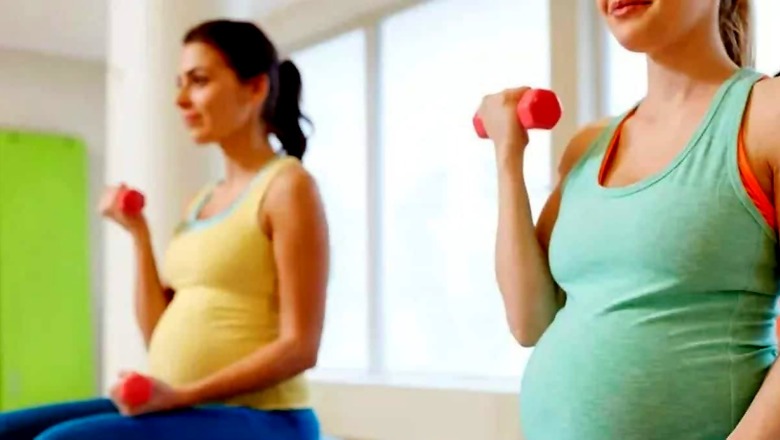
views
Pregnancy is a transformative journey that reshapes not only a woman’s body but also her entire outlook on health and wellness. As the excitement builds, so does the responsibility of nurturing the well-being of both mother and child. Among the many factors that contribute to a healthy pregnancy, exercise stands out as a key factor in supporting a woman’s physical and emotional health during this time. Staying active, when done safely, can make a world of difference for both mother and baby.
Dr. Seanna Thompson, an OB/GYN, emphasises the importance of regular exercises during pregnancy in a report by the Mayo Clinic. She explains that staying active helps the body adapt to the physical changes that occur, alleviating common issues such as constipation, swelling and back pain. Additionally, physical activity can boost mood, improve posture and enhance muscle strength and endurance. Exercising during pregnancy may also promote better sleep and lower the risk of developing gestational diabetes.
While exercises are clearly beneficial for pregnant women, there’s always doubts over the best types of workouts, optimal duration and activities to avoid. Understanding these is key for expectant mothers to safely incorporate physical activity into their routines.
Let’s explore these aspects more closely to help ensure a healthy, active pregnancy.
Exercises To Consider During Pregnancy
Dr. Thompson suggests that exercises focusing on cardiovascular fitness are beneficial for pregnant women. These include walking, swimming, cycling, aerobics, yoga, Pilates and running. Kegel exercises are also helpful for strengthening the pelvic floor. Dr. Thompson explains that these exercises support the uterus, bladder and rectum. To perform them, squeeze the pelvic floor muscles for five seconds, then relax and repeat. Aim for about 50 repetitions each day.
Duration Of Exercise During Pregnancy
According to Dr. Thompson, the duration of exercise during pregnancy depends on your fitness level. If you haven’t been active for a while, start with just five minutes of physical activity daily. Gradually increase your time, working up to at least 30 minutes a day. If you were already exercising before pregnancy, you can likely maintain your routine, as long as you feel comfortable and your healthcare provider approves.
Exercises To Avoid During Pregnancy
When pregnant, it’s important to avoid certain activities. Dr. Thompson advises steering clear of contact sports and any activities with a risk of falling. This includes hot yoga, downhill skiing, hockey, basketball, soccer, wrestling, scuba diving, gymnastics, water skiing and horseback riding.
While using free weights is an option, be cautious, as they can pose a risk to your abdomen. Resistance bands might be a safer alternative. Additionally, avoid lying on your back after the first trimester and stay away from exercises requiring balance later in your pregnancy.
Important Things To Remember
During pregnancy, hormones can loosen the ligaments supporting your joints, making them more flexible but also more prone to injury, explains Dr. Thompson. The extra weight shifts your centre of gravity, placing extra strain on your back, muscles and joints. If you experience vaginal bleeding, dizziness, chest pain, or fluid leakage while exercising, stop immediately and contact your healthcare provider.


















Comments
0 comment